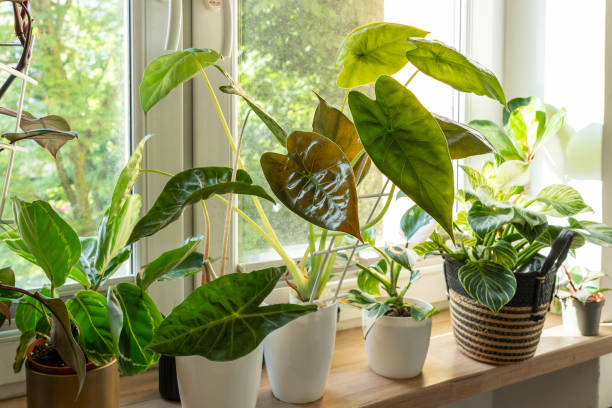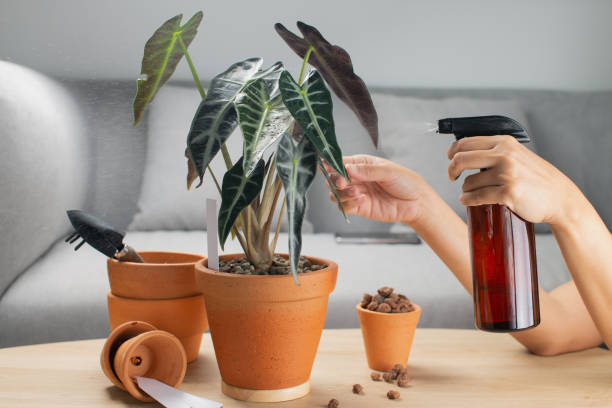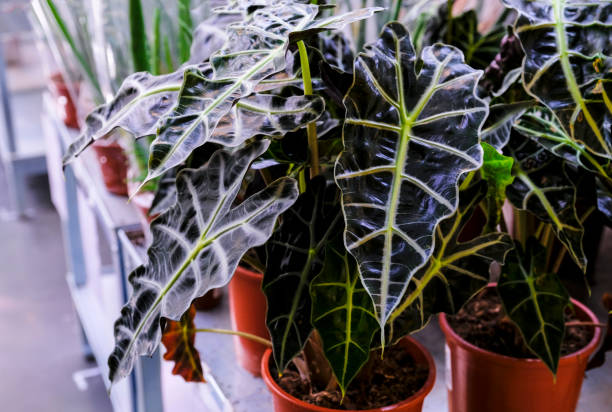Growing this tropical plant doesn’t have to be a hassle. Prized for its quick-growing large leaves, Alocasia plants can bring the right tropical feel to any home if grown the proper way.
Sometimes considered an invasive plant, Alocasia houseplants need the right growing care as they produce new leaves almost weekly.
Growing your Alocasia plants
As ornamental houseplants, tropical plants need to be placed in the correct location to thrive fully and showcase their large, beautiful leaves. They can also be grown outdoors in pots. Since they are native tropical plants, matching their tropical growing conditions is key. Match the right conditions, from the location and soil to the humidity, so they thrive well and show off.
Plant your alocasia in loose, well-drained soil with the right amendments to keep it growing well. Humidity plays a huge role in the continuous growth of your plant. Alocasia plants are accustomed to high humidity because of their native habitat. To get ample humidity, you can place the plants in the bathroom or any humid place in your home. The humidity around your plant can also be increased by humidifiers or pebble trays.
They are water-loving plants but allow the top few inches of soil to become almost dry before watering. This will help keep the soil evenly moist as you are trying to avoid the soil becoming too soggy. Soggy soils put your Alocasia at risk of fungal infections. One of the best things about growing alocasia plants they require less water during the winter months when the plant is dormant. This gives it room to develop new fresh growth in the warmer months.

Image Credit: Unsplash
Caring for your plants
Requiring basic plant care, alocasia plants need the right care in order to continue their growth. Keeping them in warm indoor locations with high humidity and bright indirect light is a great start. Although this may supply great plant growth, pruning is highly needed. The plants can grow to large foliage so pruning is the best option to control them. It’s best to prune your Alocasia when it is actively growing in the spring or summer. Their care is pretty basic.

Image Credit: Unsplash
ALSO SEE: 6 HOUSEPLANTS TO SPLURGE ON
Feature Image: Unsplash

